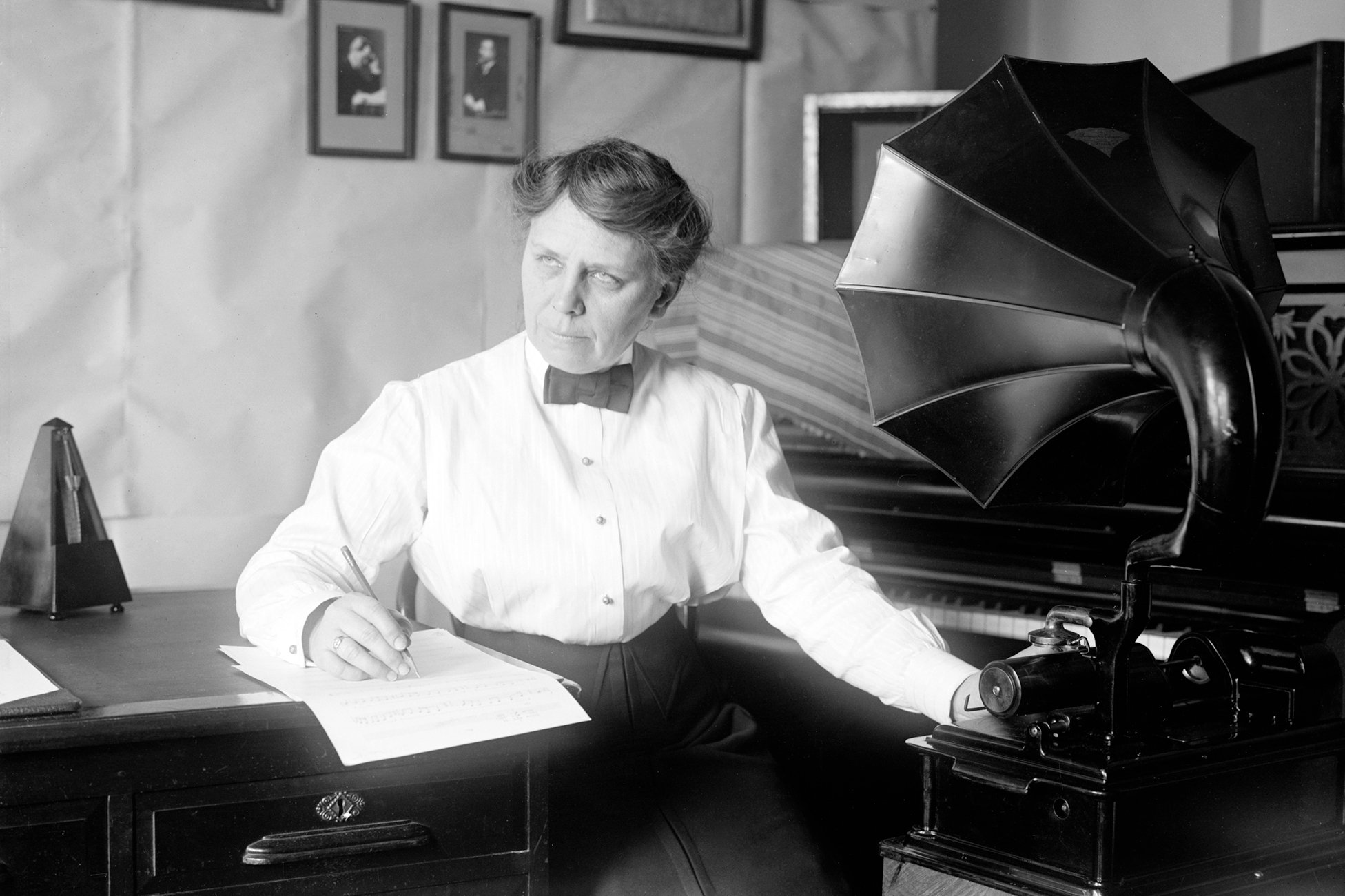
Frances Densmore
Frances Theresa Densmore was born in the small city of Red Wing Minnesota in 1867, just two years after the American Civil war ended and five years after the Minnesota Dakota Conflict of 1862, which resulted in the deaths of 358 settlers and 106 soldiers.
After the Dakota surrendered, a Minnesota military commission sentenced 303 Dakota warriors to death. President Abraham Lincoln reviewed the convictions and approved death sentences for 39 of the men. Eventually, 38 were hanged, the largest mass execution in the United States. This is the America that Frances Densmore grew up in, a society damaged by civil war and racial conflict.
Growing up in her childhood home near the Upper Mississippi, she would lie in bed at night and hear the singing and drumming of the Dakota people camped across the river. Densmore wrote about this in a letter included in Frances Densmore and American Indian Music, A Memorial Volume by Charles Hoffman.
“Opposite the town, on an island, was a camp of Sioux Indians and at night, when they were dancing, we could hear the sound of the drum and see the nicker of their campfire,” she wrote. “In the twilight I listened to these sounds, when I ought to have been going to sleep. Instead of frightening me with stories of war dances and scalps, my wise mother said, ‘Those Indians are interesting people with customs that are different from ours, but they will not hurt you. There is no reason to be afraid of them.’ So I fell asleep with my mind full of fancies about the ‘interesting people’ across the Mississippi.”
Years later, she would often begin her lectures with the line, “I heard an Indian drum.”
Densmore studied music at the prestigious Oberlin College in Ohio for three years and spent time in Boston for further study at Harvard. Inspired by ethnologist Alice Fletcher’s work in particular, she pursued her interest and study of Native American music. During the early part of the Twentieth Century, she worked with Native Americans throughout the United States recording their music on her Columbia Graphophone wax cylinder recorder and documenting their culture.
Densmore’s original Columbia Graphophone {Minnesota Historical Society}
Densmore began Working officially for the Smithsonian Institution's Bureau of American Ethnology (BAE) in 1907.
This was a time when the field was dominated by men, and she struggled at times. In her fifty-plus year career of studying and preserving American Indian music, she wrote more than 20 books and collected over 2,500 recordings of some 30 different tribes. Most of the recordings she made on behalf of the BAE now are held by the Library of Congress.
Books by Frances Densmore at North Dakota State Library {Densmore Repatriation Project/Dennis J. Neumann}
Although some of Densmore’s scientific methodology now seems archaic, and some of her dealings with indigenous people questionable, she is remembered for helping preserve Native culture during a time when government policies was to forced Native Americans to adopt Western customs and forget their own. Tribal people were confined to ever-shrinking reservations. Their religious practices were forbidden. The use of Native language was banned. Because of this, her work represents a rare occurrence of western technology benefiting indigenous people. Through one of her most substantial works, Teton Sioux Music, much Lakota culture was preserved.
Densmore died on June 5, 1957, age of 90 at her hometown. She is buried near family members at Oakwood Cemetery, Red Wing, Goodhue County, Minnesota.

Next: Choosing the Songs

